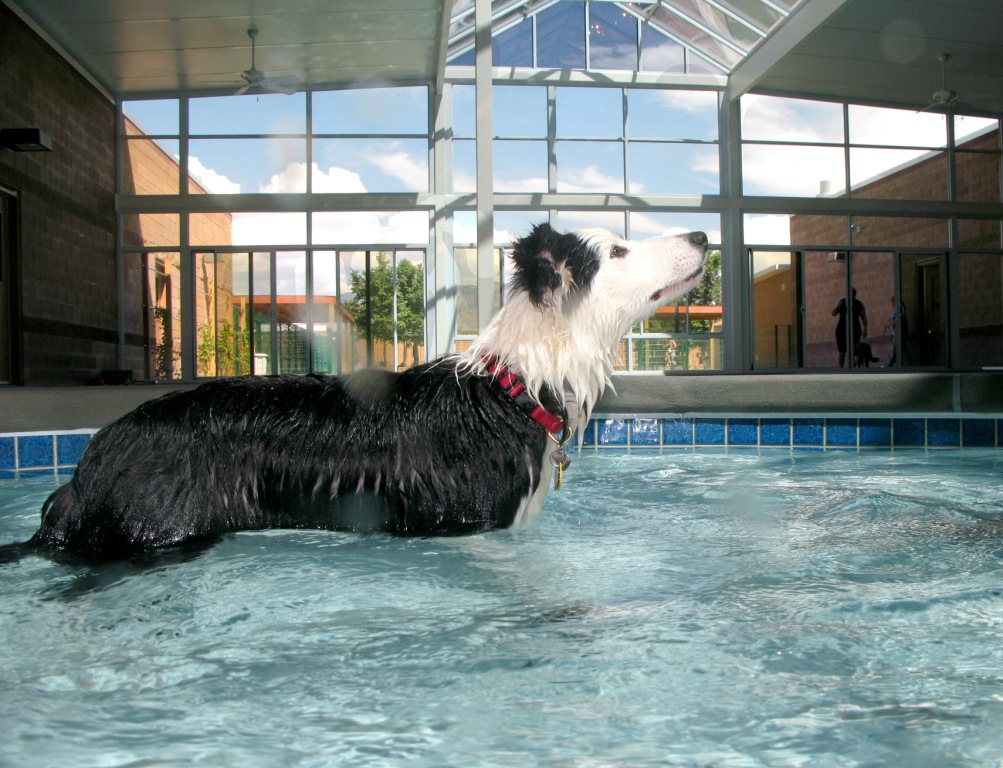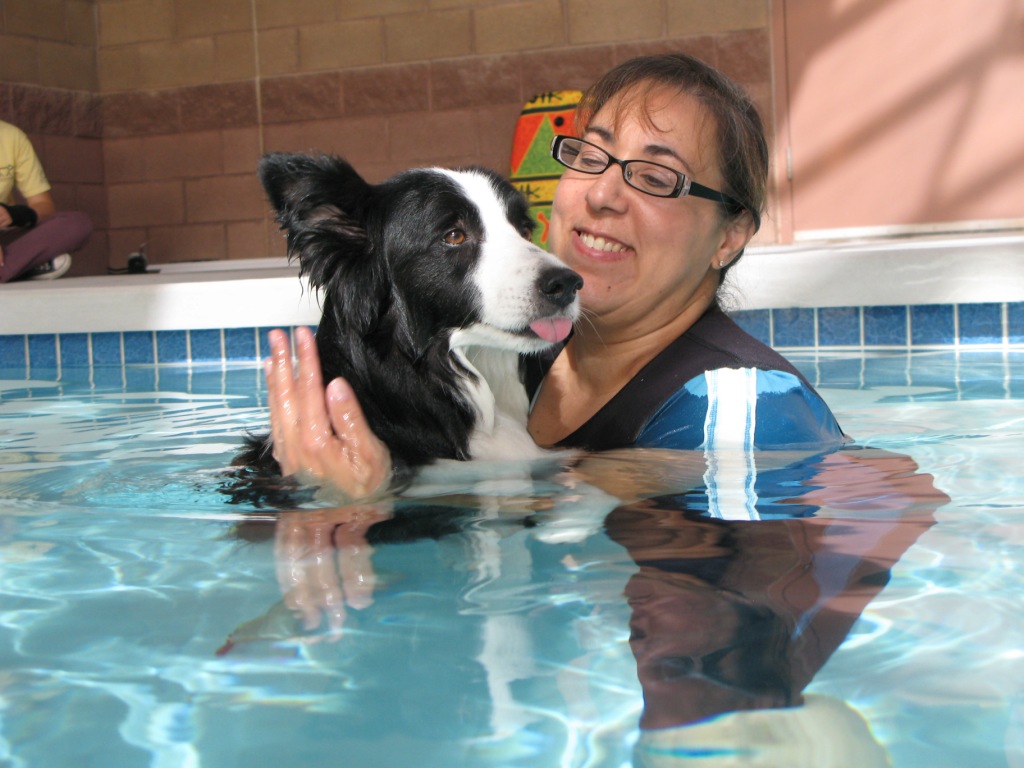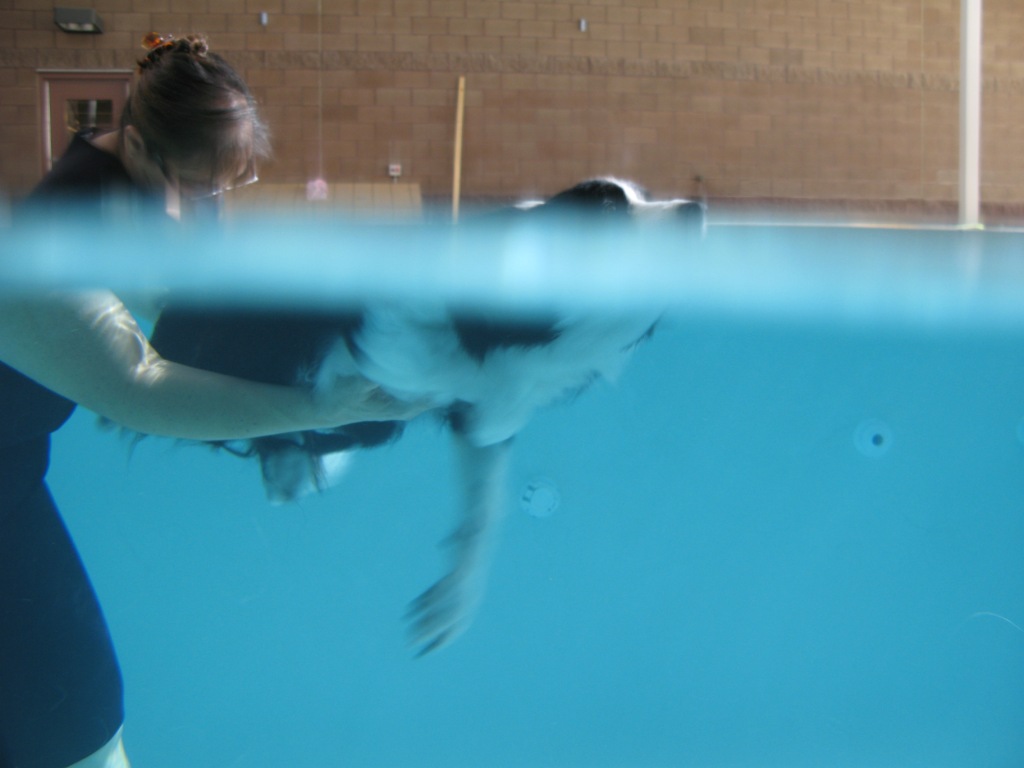
There's no telling which dogs
(or cats) are really fish
YOUTUBE, that limitless source of ridiculously cute animal videos, has had the unexpected effect of making every stupid pet trick instantly contagious. One simple trick that has turned out to be irresistible to anyone with a swimming pool is “teaching” your cat to swim.
The fad probably started with a low-quality video from Russia that went viral earlier this year, in which a cat willingly enters the sea and swims with her bikini-clad owner. Suddenly the Internet came alive with cat owners releasing their cats into swimming pools, especially after Oregon animal blogger Mary Ellen Angelscribe took to the airwaves to demonstrate how she taught all four of her cats to swim in the home pool.
Felines are famously averse to getting wet, of course, which may have something to do with how long they spend licking themselves clean afterward. But cats will certainly swim if they have to — they don’t have to be taught. Most of them don’t like it, though, as cat fur insulates against heat and cold, and cats find it very uncomfortable to have a wet undercoat.
Tropical cats such as lions, tigers, and jaguars will swim and even hunt in the water. And the “swimming cat” breed known as the Turkish Van has an inbred affinity for water even when kept as an indoor apartment cat, tinkering with dripping faucets and toilet bowls.
Dogs are another story. We are used to seeing dogs swim — the “doggie paddle” is named for them — but swimming doesn’t come naturally to them after all. Just because a dog can paddle a short distance does not mean it can really swim. Certain dogs panic in the water, and if they frantically slap their front legs trying to lift out, you have a dog that needs a life vest to stay afloat.
Certain dog breeds are more water-friendly, especially those bred to retrieve waterfowl — retrievers, spaniels, water dogs, and setters. Other dogs, for anatomical reasons, will have a harder time swimming because of short snouts, short legs, deep chests, or low body fat. These include Pugs, Bulldogs, Bassett hounds, and Greyhounds. The typical Bassett hound will sink like a stone.
But the bottom line is that it really depends on the individual dog. There are Labs that hate the water, just as there are Bulldogs that love to swim (Tillman, the famous surfing-skateboarding Bulldog, comes immediately to mind — he just wears a life vest.)

Getting a paw in
We talked with dog-swimming expert Michelle Martin, who works dogs in the pool at Enchantment Pet Resort in Rio Rancho, about how to introduce a dog to the water. Enchantment, which has the only aquatic facility for dogs in New Mexico, reserves one larger pool for doggie swim camp, and another where Martin works with dogs one-on-one. Usually this is for recuperative therapy, to cross-train competition dogs, or because an owner just wants to ensure that a dog can swim.
Even in the desert, knowing how can be a life-saver for dogs in certain situations, such as around the bosque ditch banks, a home swimming pool, or vacationing with the family at Elephant Butte. Martin says she has seen the full range of canine reactions to the water — including dogs that grew up swimming in lakes but freeze in terror at the edge of the pool because they can see the bottom. “All of a sudden they have an ‘aha’ moment that this is also water,” she says.
It’s best to introduce dogs to flotation as puppies, but it’s not too late at any age, says Martin, who works with many senior dogs who have joint issues. And it’s a good idea to ensure ahead of time that dogs are comfortable in the water, so they can benefit from hydrotherapy if and when they need it.
Martin always begins dogs in a life jacket, which nearly all trainers recommend. The flotation helps build confidence, lessens the threat of panic (which will keep a dog from ever wanting to approach water again), and helps build muscle memory.
To swim, dogs need to learn to keep their hindquarters afloat, Martin says, which is what the life vest teaches. At first they may pump their back legs furiously. Or they may splash the front paws fruitlessly, in which case she holds her arm as a barrier to keep the paws below water. As a dog learns to take longer strokes, the time will come when she no longer wants the vest, remarkably.
“It’s usually a smooth transition,” Martin says. You can gauge the dog’s progress by seeing whether she fully extends her back legs to stroke, keeping her rear end high. Once a dog is swimming with some confidence, encourage turns in both directions, and in tighter circles, to stretch and flex the spine.

The hydrophobic dog
If a dog seems frightened of the water, never force him in. Martin sometimes starts dogs in a kiddie pool that’s empty except for toys or treats. Then she adds a little water to see if the dog will get in. “Make sure it’s a positive experience, so they’re excited to come back,” she says. Dogs who are highly motivated by treats may catch on faster, as will dogs that see their buddies jump in. Of course, praise copiously and stay upbeat, so the dog learns that swimming is fun.
Once in the pool, Martin starts on the shallowest step, so dogs learn always to return there. (Many dogs drown in home pools each year because they don’t know where to step out). With natural bodies of water, choose an entry with a gradual, sloping incline, preferably slickrock rather than mud or sand. Martin builds trust with a frightened dog by lifting first one paw, then two paws at a time, before holding the dog aloft in the water — of course with a life vest on. Many dogs enjoy the feeling of being held afloat. “You can see in the dog’s eyes the peace and contentment,” she says. That’s how they learn that being in the water is relaxing.
It helps to introduce a dog to the water for three or four days in a row, initially, so he can process the learning in his muscles. How fast a dog adapts after that depends on the individual. Most dogs can learn to swim, but some will never want to do it voluntarily — as with people. And you can’t predict this by pedigree.
“Some dogs love it, most dogs like it, and occasionally you get a dog that doesn’t like it,” Martin says. It’s a beautiful thing to see a dog take to the water like a porpoise, stroking smoothly and pushing off the pool wall, confident and happy — all the more so if the breed is unexpected.

Good, and good for them
Just as for humans, swimming is therapeutic exercise for dogs, since it works muscles without stressing the joints. Martin has seen dogs greatly speed recovery after orthopedic surgery, or regain lost mobility, after twice-weekly sessions in the water. Swimming is an ideal exercise for overweight dogs, or as an alternative workout for dogs that compete.
Consider swim time to be double any exercise on land, Martin says. Avoid overexertion by a dog that doesn’t want to quit; 20 to 25 minutes swimming is plenty. As with children, wait a few hours after feeding, and don’t feed immediately afterward, to prevent stomach upset.
In fact, it makes sense to use the same precautions with dogs as you would with children near the water. Stay alert for jellyfish stings, bluegreen algae, wounds that could get infected, water in the ears, rip currents, fast-moving rivers, and unfamiliar lake bottoms. Make sure your dog will come when called so she doesn’t drift off. Keep an eye out for fishing lines, passing boats, alligators, the odd swimming cat, and — of course — always wear sunscreen.
Photos: Dogs cool off in the swimming pool at Enchantment Pet Resort in Rio Rancho and (far right) get individual hydrotherapy or swimming lessons. We can’t speak for the cat.
